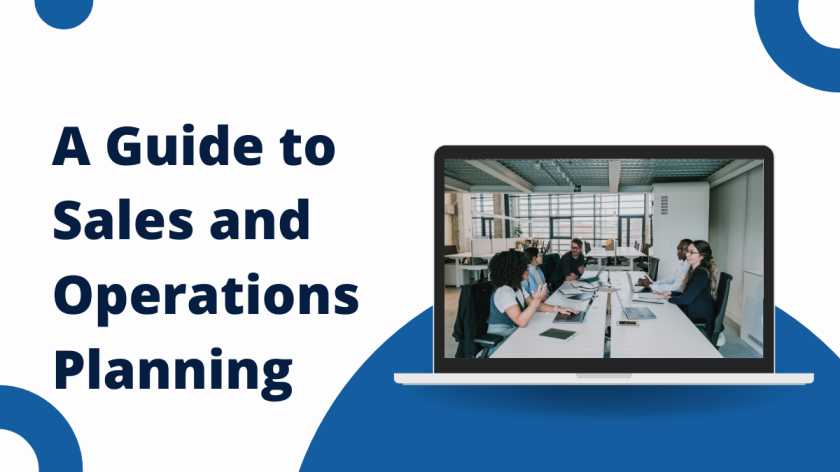If there is one thing we focus on when it comes to supply chain marketing, it is the endless chain that meets the needs of customers and businesses on its terms. The supply chain plays a critical role in ensuring that needs are met on both sides. Product availability is equally crucial as it contributes to customer satisfaction and retention, both of which are also paramount factors.
Product availability is one aspect of the supply chain that focuses on finding the right product for customer demand promptly. Let’s say you have your eye on a phone. Next, you go to a store to buy it but it isn’t available. You start looking for alternatives. To your surprise, you find an online retailer that offers same-day delivery.
This particular experience helps you appreciate your interaction with the retailer. Let’s read about this topic today! In the meantime, we will also cover topics such as how to determine the optimal product level, and a supply chain management course to conclude the blog.
What Is the Optimal Level of Product Availability?
The optimal level of product availability, put simply, refers to the level at which a company meets customer demands and maintains customer satisfaction. It involves establishing a balance between inventory levels to fulfil customer needs promptly while also reducing overstocking and wastage. While it is known for minimising costs associated with maintaining stock levels, it is mostly done to ensure an optimum level of product availability.
Importance of the Optimal Level of Product Availability
The importance of the optimal level of product availability lies in meeting customer demands and maximising sales all while reducing warehouse overstocking. Here is why warehouses opt for the optimum level of product:
- Increased sales – When products are available at hand, customers are encouraged to make purchases, which ultimately results in higher sales volumes.
- Competitive advantage – Maintaining an optimal level of products helps businesses maintain their stock and disperse it as and when needed.
- Reduced costs – The reduced costs are a result of less inventory, which leads to better financial performance for warehouses and companies in general.
- Increased brand loyalty – Brand loyalty is one of the by-products of maintaining an optimum level of product availability as businesses can meet customers’ demands quickly without delaying or rejecting it.
- Improved supply chain management – The optimal level of product availability ensures that products don’t overtake the available spacing thereby reducing overstocking, and reducing resources meant for work.
Factors To Consider for Determining the Optimal Level of Product Availability
In determining the optimal level of product availability, these factors are taken into consideration by any company with an efficient supply chain management system:
- Demand variability – Demand variability refers to the degree of variations available for certain products. All companies consider a degree of demand variability in their products. To put it simply, if the demand fluctuates, it may be necessary to restock inventory to meet customer needs. This often happens during unexpected spikes in purchasing.
- Lead time – The lead time refers to the time taken by a company to replenish its inventory. If it is too long, companies should consider stocking higher levels of inventory to save customers from waiting time.
- Seasonality – Companies consider the chances of their products going into seasonal fluctuations. When this happens, the demand for their products may need to be adjusted with inventory levels accordingly. This can especially help during peak periods of purchase.
- Cost of carrying inventory – This factor involves companies considering the cost of carrying inventory such as storage, obsolescence, and insurance. While it is vital to maintain inventory levels, it cannot possibly come at the cost of putting up with excessive carrying costs.
- Customer service level – The customer service level determines the time in which their orders can be fulfilled. This ensures that companies have enough inventory to meet the desired level targets.
- Supply chain reliability – The supply chain to which the company has subscribed should also be thoroughly monitored for possible disruption. Companies can opt for higher levels of inventory to avoid buffers.
- Production capacity – Companies must consider their production capacity before scaling up production. In the event of limited production capacity, maintaining higher levels of inventory can be a pressing priority.
- Competitive atmosphere – While the optimum level of product availability is implemented, the competitive space is also considered to avail products to customers at any given point.
Steps To Measure Product Availability
To measure the product availability, you can follow these points:
- Define your key performance indicators (KPIs) with metrics like stockout rate, fill rate, and days of supply.
- Determine the target levels for each KPI based on customer demand patterns and business goals.
- Analyse historical sales data and identify seasonal fluctuations along with demand patterns and any other factors that affect sales.
- Implement forecasting techniques like time series analysis and demand planning.
- Assess the current levels of inventory and compare them with the target levels to identify stocks that need refilling. You can also do this for excessive inventory.
- Exercise inventory control measures beginning with a safety stock policy followed by replenishment rules.
- Monitor inventory levels in real time using inventory management software. Warehouse management software helps, equally.
- Track and analyse KPIs to identify all possible deviations in the target levels.
- Investigate the root causes of stockouts and take immediate action towards correcting them and preventing future occurrences.
- Work on the overall morale and ensure timely delivery of products by minimising lead times.
- Review and adjust target levels in real-time according to the changes in market conditions, customer demands, seasonal fluctuations, and any other possible factor.
Ways of Measuring Product Availability
For more information on handling product availability, join a supply chain analytics course offered by Imarticus. Here are some ways in which you can effectively measure product availability to ensure the optimum level of goods.
- By counting the number of units in stock
- By measuring the percentage of products that are out of stock
- Through monitoring the frequency of backorders
- By tracking the fill price, which is the percentage of purchase orders that can be fulfilled immediately
- Analysing lead time
- By evaluating the accuracy of inventory forecasting and calling for planning systems
- Via engaging in patron surveys or gathering remarks on product availability
- By comparing product availability throughout various sales channels.
Factors Involving Measurement of Optimal Level of Product Availability
Factors determining the optimum size
In the product availability scenario, the optimum size holds a significant factor. The factors influencing optimum sizing include:
- Degree of specialisation (division of labour) – This is the level of specialisation within a production process. The higher the degree of specialisation, the larger the production scale.
- Mechanisation – The use of machinery level can greatly impact the optimum size of product availability. If the production costs are less, human labour may be sufficient and it would exclude the need for more machinery.
- Integration of work processes – The level of integration or coordination between separate task forces within a production system can impact the optimum level of product availability. The integration of work processes depends on the stage of production as well as the mechanisation utilised.
Factors determining the need for products and services
The need for products and services is another factor affecting the optimum level of product availability. Read about the factors that work in determining the same:
- Tastes and preferences of the consumers – Consumer’s personal preferences can greatly affect how a product or service is shaped by affecting demand.
- Income of consumers– The product is also based on the purchasing power of the consumers and their current ability to afford the products and services offered.
- Prices for related goods – Changes in the cost of alternative or complementary goods may affect demand for a particular product.
- Spending on advertising – The amount spent on advertising and promotional activities plays a role in shaping consumer attitudes and demand.
- Variety of consumers – The size of the customer base in the market can affect the overall demand for a service or product.
- Government guidelines and policies – Guidelines, including taxes, subsidies, and regulations, can influence demand by either encouraging or inhibiting consumption. It can directly encourage or discourage consumption.
Factors determining the level of supply
Changes in non-price factors that cause a shift in the overall supply curve (increase or decrease in market supply). These include:
- The number of traders in a market must be high to ensure opposition and wide choice for buyers, resulting in the highest possible level of product availability.
- The level of time used in the production of a large product should be advanced to increase efficiency and productivity, resulting in higher availability of goods.
- Lower cost of inputs used in the production of a product promotes better production areas, leading to higher availability of the product in the market.
- Government legislation can give rise to honest competition and protect buyers, leading to a balanced market with good product availability.
Three Measures of Product Availability
The three common metrics of product availability are order fill rate, product fill rate, and cycle service level (CSL). Let’s discuss this in detail.
- Order fill rate: It is the percentage of customer orders that can be fulfilled from existing inventory.
- Product fill rate: It is the percentage of individual products within an order that can be fulfilled from available inventory.
- Cycle service level(CSL): The cycle service level focuses on the probability of a product being available for immediate shipment or pickup at a specified location within a specified time frame.
Methods for Ensuring Optimal Product Availability
Here are some of the methods implemented by companies to maintain the optimal level of product availability:
Safety stock
- Calculating safety inventory – This includes estimating the amount of more inventory needed to mitigate potential stockouts. It can also involve calculating desired carrier levels and demand variability.
- Replenishing inventory at reorder point – Inventory must be replenished at a predetermined level to ensure a non-stop supply and keep away from stockouts.
Inventory management systems
- Using demand patterns and forecasting methods – This involves using inventory control structures and software to track stock levels and analyse demand styles and forecast reports.
- Automatic reordering: It imposes systems to generate purchase orders or production orders when stock levels reach a predefined threshold.
Collaboration with suppliers
- Organising verbal exchange channels – Organising effective verbal exchange channels with providers affects overall communication. This can help the professional gain knowledge on forecasting, supply constraints, and existing production schedules.
- Coordinating manufacturing schedules – Companies can participate with suppliers to align production schedules and ensure timely delivery of products.
Just-in-time (JIT) inventory management
- JIT stock control – It involves adopting an approach that minimises inventory tiers by using receiving and generating items only while wanted. This also reduces the overriding charges related to maintaining extra stock.
- Real-time information and quick response logistics – Utilising real-time data from agile logistics systems can aid in optimising delivery chain performance. One can also adjust to changes on demand.
Examples of Companies Successfully Managing Product Availability
Let’s discuss some of the companies implementing the product availability feature in real time. For more case studies, opt for a career in supply chain management. Here are our top picks and the use cases involved.
Walmart’s efficient supply chain management
Walmart is a globally recognized retailer with a fast, cost-effective, and highly integrated supply chain. Additionally, Walmart’s retail and supply chain management strategies offer competitive advantages that accelerate the company’s growth relative to its competitors. The store utilises Information technology and AI initiatives to increase its supply chain management efficiency.
Implementations:
-
Utilising advanced analytics and forecasting techniques
Walmart uses a variety of analytics to ensure that it attracts more customers on its online and offline platforms. This analysis gives them an upper hand in ensuring the availability of the right products at the right time with reasonable price tags. This, in turn, results in better company revenues and customer satisfaction.
Walmart uses its vast database to get a competitive advantage over other stores. With the Internet Of Things(IOT) everywhere, Walmart integrates its big data technology and analytics platform to predict fundamental customer needs. For instance, it can recommend basic household things like groceries — milk, eggs, bread, etc.
-
Collaborating with suppliers for real-time inventory visibility
By sharing real-time sales data and demand information, Walmart has kept their company going. Furthermore, they have adopted Vendor-Managed Inventory as part of their technology-driven initiative. Through this method, Walmart empowers its suppliers to take on the responsibility of managing their inventory stored in the warehouses.
Amazon’s fulfilment centres and inventory tracking systems
Amazon.com’s warehouses are called “fulfilment centres” because their services include both storage and distribution. Fulfilment centres are where orders are picked, packed and shipped to customers. Amazon took its first initiative toward cloud computing with the public launch of its Amazon Web Services, allowing companies to use its cloud storage space.
Additionally, with the launch of this programme, Amazon has managed to rake in third-party vendors to store their products in its warehouses and sell them through Amazon’s portal.
Implementations:
-
Utilising robotics and automation to improve inventory accuracy
Amazon.com purchased Kiva Systems in 2012, also known as the basis of its automation initiative. Kiva was renamed Amazon Robotics in 2015. In 2019, Amazon acquired Canvas Technology, a company that builds robotic vehicles with computer-guided vision. In the same year, the company began working with other vendors such as CMC, and Soft Robotics for shipping and similar processes involved.
-
Optimising order fulfilment and delivery processes
Amazon order management handles customer orders on the Amazon marketplace effectively and in a systematic manner. This system manages various essential processes such as order processing, inventory management, shipping, and customer communication. With Amazon order management, one can ensure timely and accurate order fulfilment that maintains optimal inventory levels and provides a seamless buying experience for customers.
Challenges and Potential Risks in Managing Product Availability
While the advantages of calculating and working on an optimum level of product availability are many, we must also consider its disadvantages.
Supply chain disruptions and unforeseen events
- Natural disasters, strikes, or political instability impacting production or transportation – Natural disasters and the political nature of things can create a huge impact on the supply chain system. Political strikes can lead to factory shutdowns, and hurricanes and floods, a similar impact. Natural disasters can affect the areas in which they occur, disrupting the flow of products. These include obstacles in routes and damaged manufacturing plants and warehouses.
- Implementing contingency plans and building resilient supply chains – Companies must follow contingency plans for identifying alternatives. These include finding a different location altogether or diversifying their inventory storage.
Unpredictable customer demand
- Managing sudden spikes or drops in demand due to market changes or consumer behaviour: Market changes can be unexpected, and as a result, disrupt the supply chain. Companies can use forecasting methods to foretell the events including seasonal fluctuations and economic downturns.
- Deploying flexible inventory management strategies and proactive monitoring: Companies must adopt flexible inventory solutions to respond to changing situations. The proactive monitoring of customer trends can also tell a lot about demand patterns and sudden shifts in demand.
Conclusion
Optimal product availability is crucial for all sizes of businesses and can play a major part in enabling customer satisfaction and maximising profits. So far, we have only read about how this feature works. With a practical course, you can take an approach towards initiating efficiency.
If you are interested in supply chains and the analytics that help support and manage these supply chain systems, you can enrol in the Advanced Certificate in Supply Chain Management and Analytics offered by CEC, IIT Roorkee (Continuing Education Center) along with Imarticus Learning. The Supply Chain Management course relies on empowering individuals with the basics of supply chain management along with the latest developments in the industry.
With the help of this supply chain analytics course, enthusiasts can get hands-on training and learn about customer behaviour, market trends, and operational performance. With this knowledge, learners can make data-driven decisions, and enhance the supply chain management system. Sign up for this course today! Delay no further.








